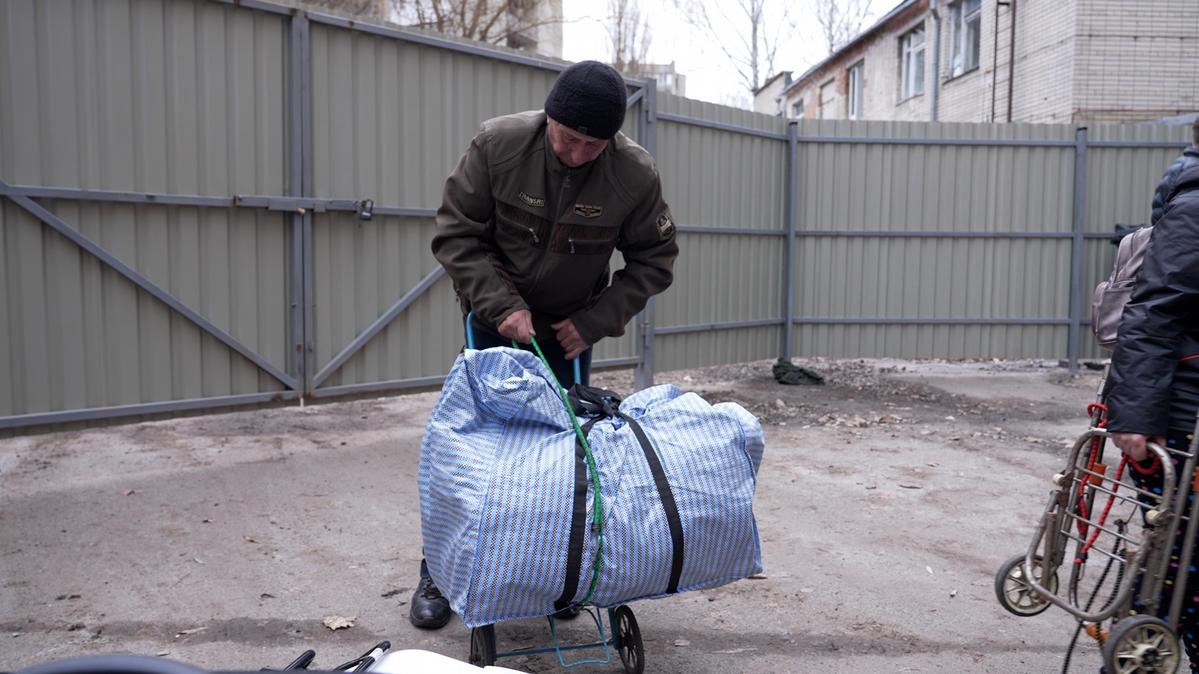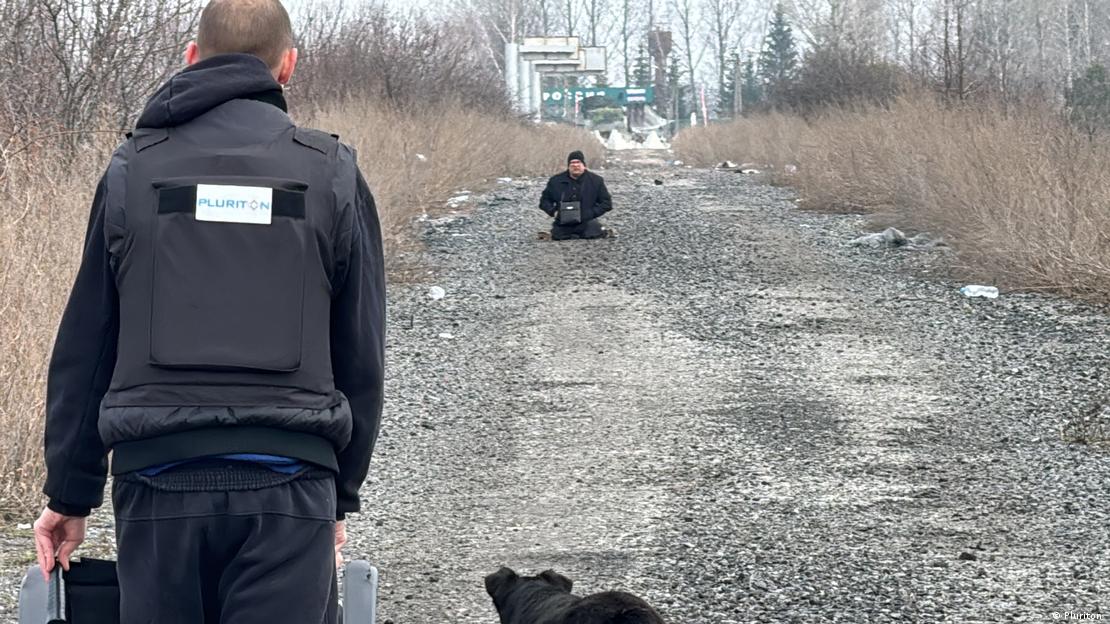
Each day, buses of volunteers travel from the town of Sumy to the Ukrainian-Russian border and back. They collect people who cross at the Kolotilovka-checkpoint, the former being a village in the Russian region of Belgorod, and the latter in the Ukrainian region of Sumy. Since April 2022, this has been the only humanitarian corridor through which Ukrainians from the Russian-occupied territories can reach those controlled by Kyiv.
Eleven people and a howling dachshund are on the bus to Sumy. They are mostly women and older people, but there are also two teenagers. Some gaze wearily out the window, others doze. Some have been on the road for several days, having made their escape through the two-kilometer "gray zone" between Kolotilovka and Pokrovka, which they had to cross on foot, carrying their belongings.


Crawling across the border
"Everyone went ahead, but I was slower," says Viktor, a pensioner from the Luhansk region, about his journey. He sits next to a folded wheelchair, which the double amputee gave to his wife, Lyudmila, so that she could transport the luggage through the gray zone. Viktor was determined to crawl the two kilometers (1.2 miles) with the help of a homemade pad, but the distance proved to be too much. "As soon as I crossed the border, I knew I wouldn't make it," he says.
When Lyudmila reached the Ukrainian checkpoint, she called for help from volunteers who are allowed into the area each day to pick up Ukrainians there with the Red Cross. They met Viktor with a wheelchair and helped him get to the Ukrainian side.
'Among friends now'
Viktor and Lyudmila hesitated to flee for a long time because they knew it would be particularly difficult for him. Getting out of the Russian-occupied territories requires travel via Russia to a European country, which would have been time-consuming and expensive.
The Kolotilovka-Pokrovka crossing was therefore the couple's only option. Once they finally arrived, the checks went quickly. Viktor is moved to happy tears. "I've only experienced so much warmth from my own mother," he says. "It feels like being among friends now!" Their plan is to continue on to Kyiv, where their children and a newborn granddaughter are waiting for them.
In Pokrovka, officials check the papers and belongings of people coming from the occupied territories. "They also search databases for them" as part of strict security measures, says border guard Roman Tkach. Afterwards, a bus takes the new arrivals to a shelter in Sumy where they can bathe and stay for several days before traveling free of charge by train to Kyiv, Poltava, Kharkiv or Dnipro.
'Drones and Russian soldiers everywhere'
Mykhailo, a former bus driver in retirement, wants to visit his daughter Anna in Kharkiv. He lived in the Kharkiv region for 40 years, in the village of Tavolzhanka. Now in the occupied territory, his house has been under fire. "There are drones and Russian soldiers everywhere you look. They have dragged everything out of the houses and dismantled it, such as doors, floor coverings and carpets, because they are building shelters for themselves," he says angrily, describing his former neighbors as "collaborators." Many of them have since moved to Russia, but Mykhailo emphasizes that he refused a Russian passport.
Fleeing the Russian draft
Anastasia, 18, left the Russian-occupied part of the Kherson region with her boyfriend Petro [name changed], who turned 18 in December and received a summons from the Russian army in March. "We decided to flee because I was afraid he might just be taken away," says Anastasia. She left her mother, her 7-year-old brother and her 80-year-old grandmother at home.
Anastasia meets her father, a solider in the Ukrainian armed forces, in Sumy. They haven't seen each other in 2 years. They cry and hug for a long time.
"Someone in the village betrayed that my father is a member of the military," Anastasia says. Men who Anastasia describes as representatives of the Russian secret service (FSB), demanded to see correspondence with him.
"I had deleted it long ago and said that I was not in contact with him," says Anastasia. "They threatened that if we didn't have Russian passports in two weeks, we would be taken away or something else would be done to us. They were very harsh." She and Petro will now stay with her paternal grandparents, who live in the Poltava region.
Crossing remains open despite shelling
Currently, 20 to 40 people use the humanitarian corridor each day to flee Russian occupation as the war wears on, says border guard Tkach. They come from the occupied parts of the Donetsk, Luhansk, Kharkiv, Kherson and Zaporizhzhia regions, as well as from the Ukrainian peninsula of Crimea, which was annexed by Russia in 2014.
Crossing is possible for Ukrainian citizens alone during daylight hours and only in one direction — from Russia to Ukraine. "Ukrainian citizens have a constitutional right to enter the territory of Ukraine," Tkach says.
Despite increased shelling in the region the crossing remains open. So far, no one has been injured there.
This article was originally written in Russian.

